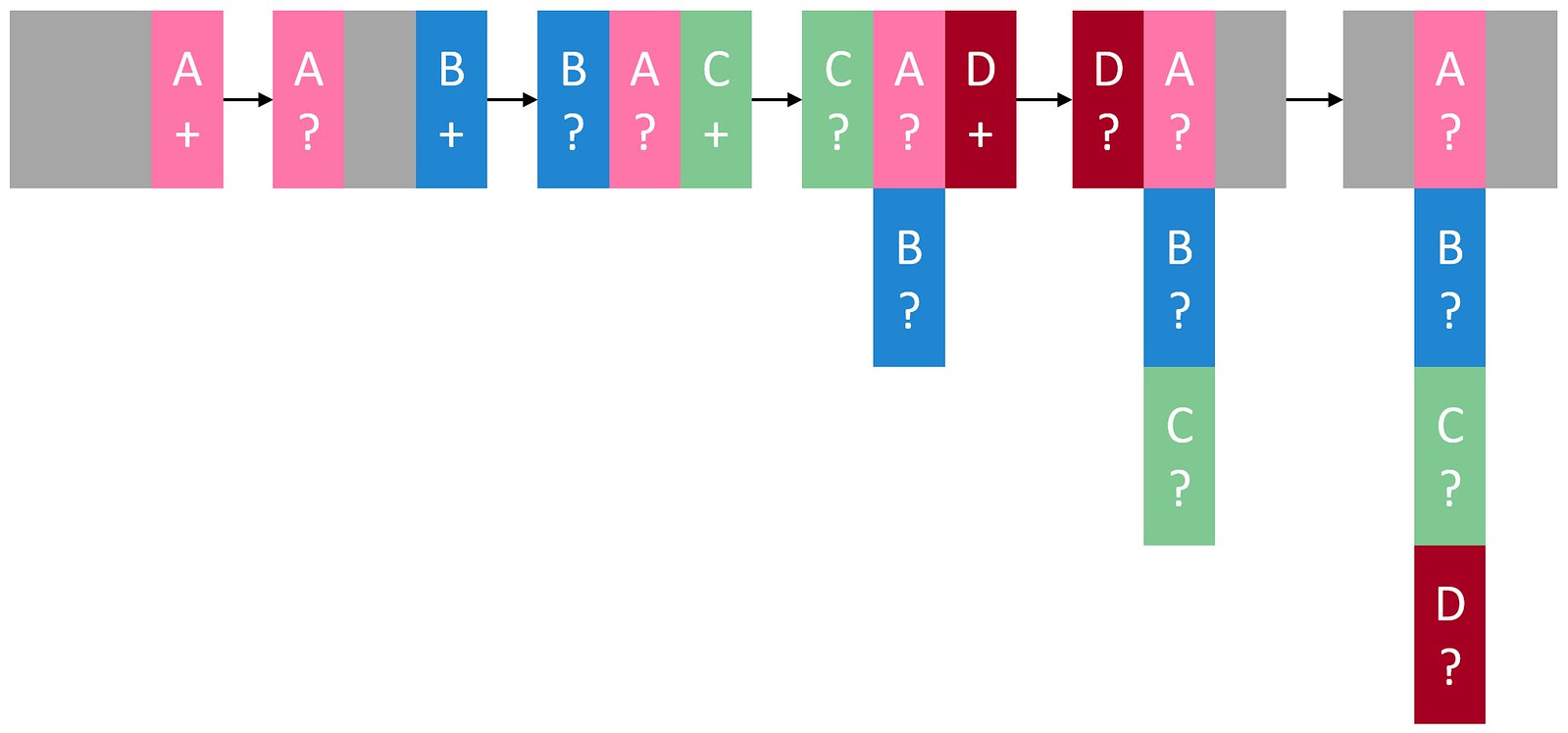
Time pilot – E-Learning Provocateur
There was an aspect I omitted from my previous post, Space invaders, in which I covered the spacing effect as a means of maximising long-term retention.
Zsolt Olah picked it: interleaving and – ironically! – I judged it a bridge too far to include in the same post and so decided to split it out across a second one.
You’ll see why…

Interleaving
Before defining interleaving, I feel it’s helpful to review the opposite: blocked presentation or blocking. This approach is equivalent to massed presentation whereby the content is consumed successively:
An alternative approach is to split each block into leaves and vary their presentation. This approach is known as interleaved presentation or varied presentation or mixed presentation:
The illustration above maintains the topical sequence, in contrast to random interleaved presentation whereby the sequence is shuffled:
Spaced interleaving
Just as the spacing effect can be employed to produce spaced block presentation:
…so too can it be employed to produce spaced interleaved presentation (grouped):
…or spaced random interleaved presentation (grouped):
I use the qualifier “grouped” because, while that’s the traditional way of illustrating interleaving – I suspect due to the formal paradigm of education by which you fill up the periods assigned to you – I see no reason why each leaf couldn’t be separated over time; hence spaced interleaved presentation (separated):
…and spaced random interleaved presentation (separated):
As you can see, it gets complicated real quick, and that’s before employing reinforcement or the testing effect!
Dynamic interleaving
When I look at the various permutations of spacing and interleaving, I wonder if an optimal timing or sequencing regime exists. Full disclosure: I’ve done zero research to find out; if you have, I’d love to play my lazy web card and ask you to share your findings via a comment below.
I also wonder about the efficacy of a bespoke regime that sequences the leaves according to a dynamic pattern – test latest > test previous > present new – leading to a final summative test:
I call this regime spaced dynamic interleaved retrieval (quite a mouthful!) or dynamic interleaving for short. Again, if you’re aware of anything out there that’s similar, please let me know.











